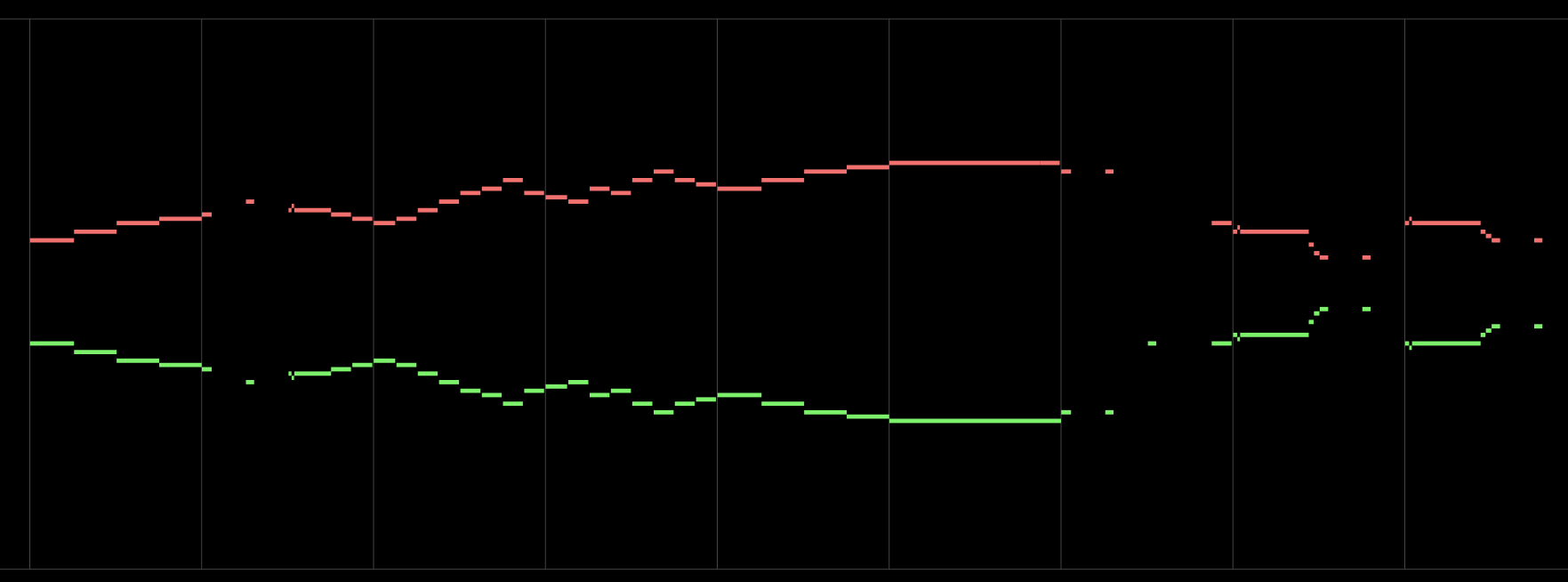I’ve just finished a canon – #56 “Sugilite” – which explores the possibility of making music under two special constraints. First, the piece uses strict contrary motion, which means that the follower is an upside-down version of the leader: wherever the leader descends, the follower ascends by the exact same melodic distance, and vice versa. (This technique is cumbersome enough that I’ve only explored it occasionally in my canon series so far: I had used strict contrary motion in Canon #37 “Graphite” and non-strict contrary motion in Canons #12 “Amber” and #13 “Carnelian”.) Second, the piece uses a major third on the first beat of every measure, following in the steps of other restricted interval canons: #52 “Pyrite” (fourths), #54 “Tektite” (major seconds) and #55 “Magnetite” (minor sevenths). There are a few short connecting passages that don’t participate in the canonic imitation.
Here is a visualization of the beginning of the piece. You can see how the top voice (red) is a mirror image of the bottom voice (green) with a skew or time lag between them:

If we eliminate the skew between the voices, the mirror relationship becomes even clearer:

The challenge of working in contrary motion is that many melodic gestures are orientation-specific: they “make sense” when played in their upright form but sound confusing or unconvincing when played in their mirrored form. The composer has to search for those gestures that are musically persuasive in both orientations.
The further challenge of working in strict contrary motion where interval sizes are preserved exactly in the mirrored voice (a major third up translates into a major third down, never a minor third) is that it’s nearly impossible to stay within the notes of a given key. The technique lends itself best to pieces with a free or floating kind of tonality (as in Canon #56) or to pieces that are entirely non-tonal.
Why bother with the difficulties of strict contrary motion? I think it leads to a fascinating relationship between voices, one that can be challenging to perceive at times, but one which is definitely accessible to the focused ear – a relationship where the voices seem to be “the same” in one sense, and yet in another sense they seem to be saying different things: sort of like twins with unmistakable and deep similarities, but with their own personalities and directions. As they move in these contrary directions it is interesting to notice how similar they remain, or how different they become.
Here is Canon #56: